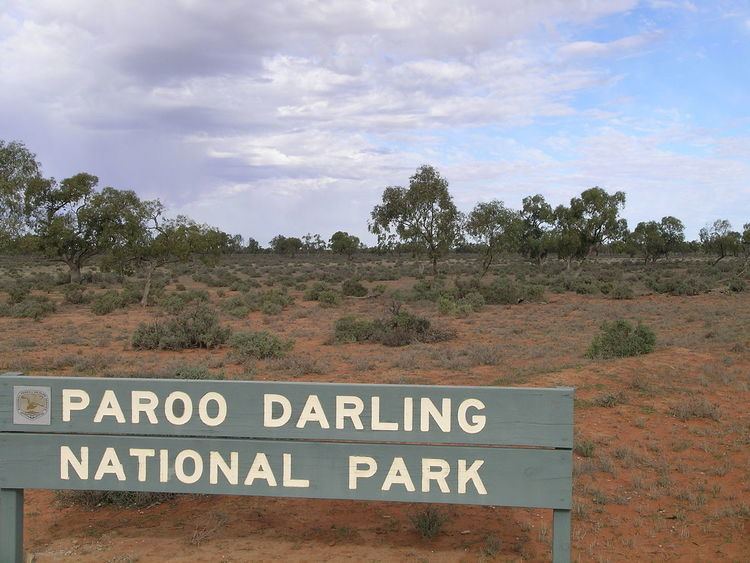Area 1,781 km² | Established March 2000 (2000-03) Phone +61 8 8083 7900 | |
 | ||
Managing authorities See also Protected areas ofNew South Wales Hours Open today · 8:30AM–4:30PMFriday8:30AM–4:30PMSaturdayClosedSundayClosedMonday8:30AM–4:30PMTuesday8:30AM–4:30PMWednesday8:30AM–4:30PMThursday8:30AM–4:30PMSuggest an edit Management National Parks and Wildlife Service Similar Mutawintji National Park, Bungawalbin National Park, Mount Nothofagus National, Dunggir National Park, Kinchega National Park | ||
Sydney weekender in outback nsw paroo darling national park
The Paroo-Darling National Park is a protected national park that is located in the Far West region of New South Wales, in eastern Australia. The 178,053-hectare (439,980-acre) national park spans two distinct regions in the outback area. This region covers the arid catchments of the Paroo River (Peery and Poloko Lakes) and the Paroo-Darling confluence to the south.
Contents
- Sydney weekender in outback nsw paroo darling national park
- Peery lake paroo darling national park
- History
- Environment
- Access
- References
Peery lake paroo darling national park
History
Aboriginal heritage has been protected here and evidence of a lifestyle spanning back many thousands of years in the hearth sites, stone tool scatters and scarred trees that had supplied bark.
The Paroo-Darling National Park was formed after the purchase of seven properties between 2000 and 2003 by the Government of New South Wales, with assistance from the National Reserve System Program. The northern section of the park, near White Cliffs, comprises the former stations, Arrowbar, Peery and Mandalay.
Environment
The park is set in a landscape of grey cracking clays and red sand hills along the Darling River floodplains. Peery and Poloko Lakes and their associated wetlands form part of the Paroo overflow which is important for wildlife. Peery Lake covers 5,026 hectares (12,420 acres) when in flood and is the largest of the Paroo Overflow lakes. This lake is a water bird haven and when full it will hold water for several years. When dry, Peery Lake is the only location in New South Wales where the Great Artesian Basin mound springs are visible in a lakebed.
Most of the park lies within the Paroo Floodplain and Currawinya Important Bird Area, identified as such by BirdLife International because of its importance, when conditions are suitable, for large numbers of waterbirds.
Access
The national park can be accessed via dry weather roads, from the villages of either White Cliffs, located, some 20 kilometres (12 mi) away, or Wilcannia. The visitor centre at White Cliffs is able to provide further up-to-date information on the Paroo-Darling National Park.
Camping is permitted at the Coach and Horses campground at the old Wilga Station which is approximately 50 kilometres (31 mi) east of Wilcannia.
